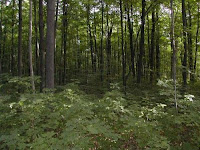PRODUCED BY: Midwinter Productions Inc, Universal Pictures.
DISTRIBUTED BY: Metrodome Distribution, Eurocine, Filmax (click here to see the full list).
BUDGET: $25m.
BOX OFFICE: $32m (USA), £500k (UK).
RATINGS: 5.2 (IMDb).
It starts with an audio bridge connecting the idents with the opening shots of the film. This sound is non-diegetic. This opening sound is typical of slasher films as has a lot of long drawn out notes and irregular faster beats. This is a common approach as the longer notes encourage the audience to hold their breath and the faster beats make the heart beat slightly irregular. These effects create more tension for the audience and make it more scary for them.
There is exaggerated diegetic sound of thunder, this is very precisely edited in and also adds to the anchorage of it being from the slasher genre. Bad weather and storms are often used in the slasher genre to reflect the bad that is to come later in the film.
As it gets into the main narrative of the film the music continues, but the 'tune' is different, showing this change. In this opening sequence intertextuality to Psycho and Jaws is used as they use some of the background sounds that were commonly used in those films. Sound is also shaped to fit zooms and are often exaggerated to ensure the audience pay attention to it. An example of this is the creaking locker door and the turning of the key. Throughout this sequence the sound is mostly continuous but the intensity varies.
When trying to build tension before the first victim the sound dies down a lot so that the tension of the scene can build naturally. This technique made the false scare here more effective and then the sound starts again when he is killed to intensify the situation.
It starts with an audio bridge connecting the idents with the opening shots of the film. This sound is non-diegetic. This opening sound is typical of slasher films as has a lot of long drawn out notes and irregular faster beats. This is a common approach as the longer notes encourage the audience to hold their breath and the faster beats make the heart beat slightly irregular. These effects create more tension for the audience and make it more scary for them.
There is exaggerated diegetic sound of thunder, this is very precisely edited in and also adds to the anchorage of it being from the slasher genre. Bad weather and storms are often used in the slasher genre to reflect the bad that is to come later in the film.
As it gets into the main narrative of the film the music continues, but the 'tune' is different, showing this change. In this opening sequence intertextuality to Psycho and Jaws is used as they use some of the background sounds that were commonly used in those films. Sound is also shaped to fit zooms and are often exaggerated to ensure the audience pay attention to it. An example of this is the creaking locker door and the turning of the key. Throughout this sequence the sound is mostly continuous but the intensity varies.
When trying to build tension before the first victim the sound dies down a lot so that the tension of the scene can build naturally. This technique made the false scare here more effective and then the sound starts again when he is killed to intensify the situation.






















